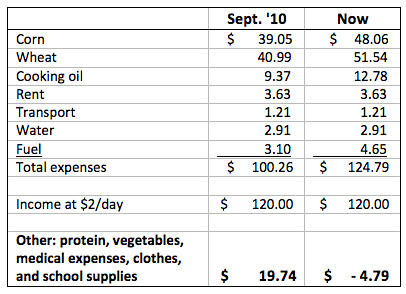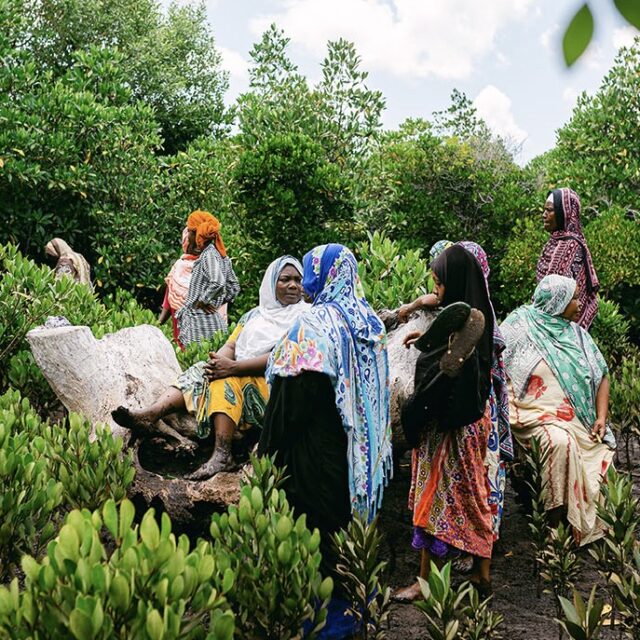Thanks to good harvests, much of sub-Saharan Africa has been sheltered from the recent rise in world food prices. This is in sharp contrast to the food price spikes in 2007 to 2008, which resulted in a sharp increase in poverty and riots across many African cities. However, currently there are pockets where demand outstrips supply and poor families are feeling the crunch. In Nairobi, for example, supermarket prices for corn, wheat and cooking oil have risen by 25% in less than six months. For people making a living at the poverty line, this change has been devastating. I decided to calculate how devastating.
I assumed that a landless urban family of five people has two breadwinners each making $2 a day and three children eating half as much as their parents. Before prices went up this winter, the family’s basic carbohydrates, corn and wheat, used around two-thirds of their income. Fast forward a few months. With corn flour at the supermarket costing 97 cents instead of 79 cents for a 2 kg bag and wheat $1.54 instead of $1.22, the family is now spending up to 83% of its income on staple carbohydrates and having trouble making ends meet.

Not making ends meet means that the family has eliminated important things like vegetables, meat and beans, trips to the doctor, and school supplies. They are now starting to skip starch-only meals and have likely taken a child out of school to work to make up for the added expense. It would be great if there were some sort of safety net for them to access. However, most developing countries, including Kenya, do not have government-run food stamp or food bank programs.
Sustainable agricultural development is a great long-term solution to food insecurity. However, short-term solutions may also be necessary as prices are rising rapidly. For example, during the last food price crisis, in 2007 to 2008, the Kenyan government tried to control prices and sell corn to the poor at a lower rate, but the program had too many kinks. It also struck a deal with the country’s corn millers to keep the supermarket price low, but this lasted only for a short time before prices continued upward.
Our eyes are on the Kenyan government and international donors to see what they will or will not do this time around to prevent a food crisis in Kenya.


